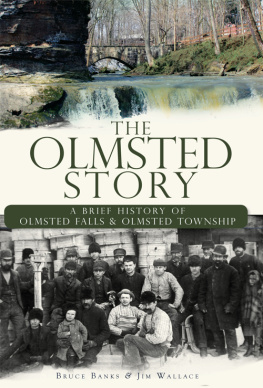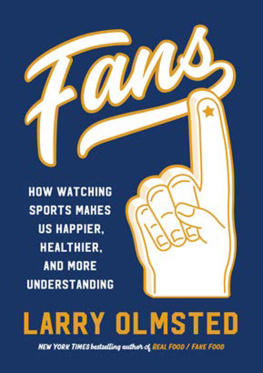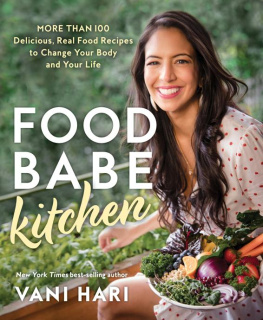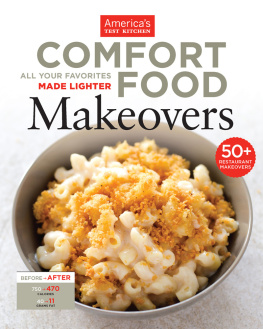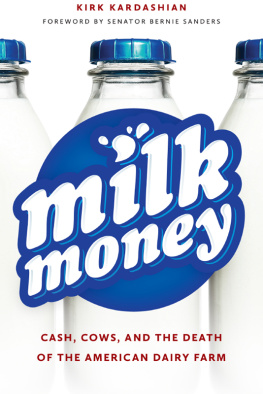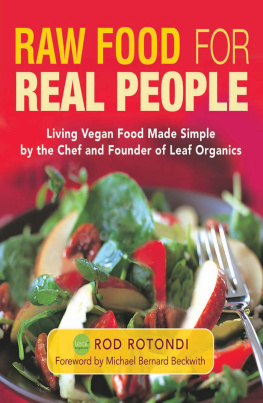REAL FOOD
FAKE FOOD
Why You Dont Know What Youre Eating & What You Can Do About It
LARRY OLMSTED

ALGONQUIN BOOKS OF CHAPEL HILL 2016
Also by Larry Olmsted
Getting into Guinness: One Mans Longest, Fastest, Highest Journey inside the Worlds Most Famous Record Book
For Allison, who believed; for Alice Fixx, whose love for Parma opened my eyes to Real Food and set me on this course; for Nicholas James Peter Kau, taken before his time; and for Sundance, whose passion for Real Foodespecially grass-finished, pasture-raised beefwas unrivaled.
Theres nothing more fundamental than knowing what you are putting in your mouth.
KELSEY TIMMERMAN, Where Am I Eating?
Contents
Introduction
Food fraud, or the act of defrauding buyers of food or ingredients for economic gain... has vexed the food industry throughout history.
RENE JOHNSON, Food Fraud and Economically Motivated Adulteration of Food and Food Ingredients
I love food.
My friends tell me I have the best job in the world, and its hard to argue. As a journalist focused on travel and food, Ive spent the last twenty-plus years visiting great hotels in some of the nicest parts of the world and eating really well. When Im not eating out, Im cooking at home. I have a garden, I carry back exotic ingredients from all corners of the globe, and Ive traveled thousands of miles to eat at particular restaurants or taste hard to find local specialties. My work has taken me to roadside barbecue stands and clam shacks, to Michelin-starred restaurants and top celebrity chefs. Its taken me inside the James Beard house, to food laboratories and processing plants, to farms and artisanal cheese dairies. Ive seen how some of the finest delicacies and specialty foods in the world are made, Ive seen food infused with passion, and Ive tasted dishes so good they haunt my memory. But among all these bright spots, food hides a darker side.
Ive visited Japan several times in the past two decades, and while physically small, Japan packs a big culinary punchit is one of the worlds great food countries. Visitors are often surprised to learn that Japanese culture has a rich tradition of fake food, but happily its a tradition designed to help consumers. Many restaurants in Japan display an array of replica dishes in their window so you can see what they serve, even if you cant understand the menu, and in a pinch you can always point. These replicas are works of art, elaborate and realistic despite being made of plastic. Just as New York has a garment district and jewelry district, there is an entire neighborhood in Tokyo known for its fake-food shops, where restaurant owners come to buy models. Tourists visit as well, seeking souvenirs, such as a tray of delicious-looking nigiri sushi that can adorn a counter at home and never go bad, or a bowl of ramen noodles topped with chopped green onions; egg; and a tempura shrimp, complete with tail. Utterly fake, the stuff is meant to be inedible.
Like Japan, the United States also has a rich tradition of faking food, but it is not quaint, helpful, or harmless. Our supermarkets and our homes are full of Fake Foods that we actually eat. At their least malicious, these are rip-offs, defrauding us economically, depriving us of quality, and literally leaving a bad taste in our mouths. At their worst, they make us sick and may even kill us. Along the way, they put farmers and food craftsmen around the globe out of work, destroy the environment, and even promote slave labor. Some of these fakeries are outright criminal, some merely immoral, and many not only legal but supported by our government. Ironically, these foods often prey most heavily on consumers who are actively trying to eat better and healthier, as well as those with more rarefied tastes. Many fakes are found in the specialty foods sector, which for the first time in 2014 topped one hundred billion dollars in the United States. This category is rife with scams, including many foods viewed as healthier choices, as well as fancy cheeses, meats, oils, and other gourmet items.
Whether or not you care about your health, economic justice, or the environment, if you simply care how your food tastes, this issue matters. When youve eaten something that lingers in your memory and leaves you craving more, when youve had one of those sublime meals where you lick your lips and exclaim, Yum!, youve probably just tasted Real Food. And whenever there is a delicious Real Food, there is good chance someone is making a fake version.
When I say fake, I mean fake, as in not what you think you are buying or eating. There are a lot of problems with how food is produced in this country, and if you want to be terrified by the horrors of industrial poultry production or find out why your drive-thru meal contains so many ingredients youve never heard of, put this book down and read Omnivores Dilemma, Food, Inc., or Fast Food Nation. Im talking about a massive industry of bait and switch, where you get something other than promised. I dont like industrially produced supermarket beef, but it is in fact beef, and it lives up to that billing. But when the same drug-laden, artificially fed beef is passed off as natural, grass fed, or pure, then it becomes fakeit is no longer what it claims to be. Fake Foods are usually of low quality. But they are not fake because they are of low quality; they are of low quality because they are fake. The perfect example is Maine lobster, a Real Food that is delicious, coveted, and labor intensive to shell, as anyone who has eaten whole lobster knows. Thats why in New England, the popular lobster roll, basically a heaping mound of lobster meat on a bun, is one of the most expensive sandwiches you can find on a menu. So how can fast-food chains sell lobster rolls for half the price or less? Simpletheir lobster rolls dont contain actual lobster. And its legal. Welcome to Fake Food.
Japans restaurants may display fake food in windows, but inside there is plenty of Real Food to eat. On one trip years ago, I had the pleasure of tasting Kobe beef, which is perhaps the single most famous food Japan produces, one that has taken on mythical proportions. So I was perplexed when I returned to the States and found the Kobe beef on this side of the Pacific so dramatically different, lacking in both marbling and flavor, nothing like what I tasted in Japan. I decided to look into this and figure out why. It did not take me long to discover that for years the U.S. Department of Agriculture (USDA) had banned the import of all Japanese beef, without exception.
The bottom line? All of the Kobe beef sold in this country, by chefs famous and anonymous, in ten-dollar sliders or three-hundred-dollar steaks, was fake, all of it, end of story. Every single restaurant and store purporting to sell Kobe beefor any Japanese beefwas lying, including some of the countrys best-known chefs.
When I wrote about this for my online Forbes column, it became the most widely read of hundreds of such columns, surpassing one million readers, and several years later it still gets thousands of new reads each month. I was amazed by the interest and furious passion I arousedon both sides of the issue. Many readers wrote in because they were outraged, justifiably, at having paid hundreds of dollars for a single steak, only to be ripped off. Others took a more xenophobic view, bashing Japan and defending the false advertising by insisting that we had no need to kowtow to other countrys trademarks, and this being America, we should just do damn well as we please. Others, somewhat irrelevantly, wrote in to praise the quality of domestic beef. For me, the striking point was that almost none of the respondents had actually tasted Kobe beef.



